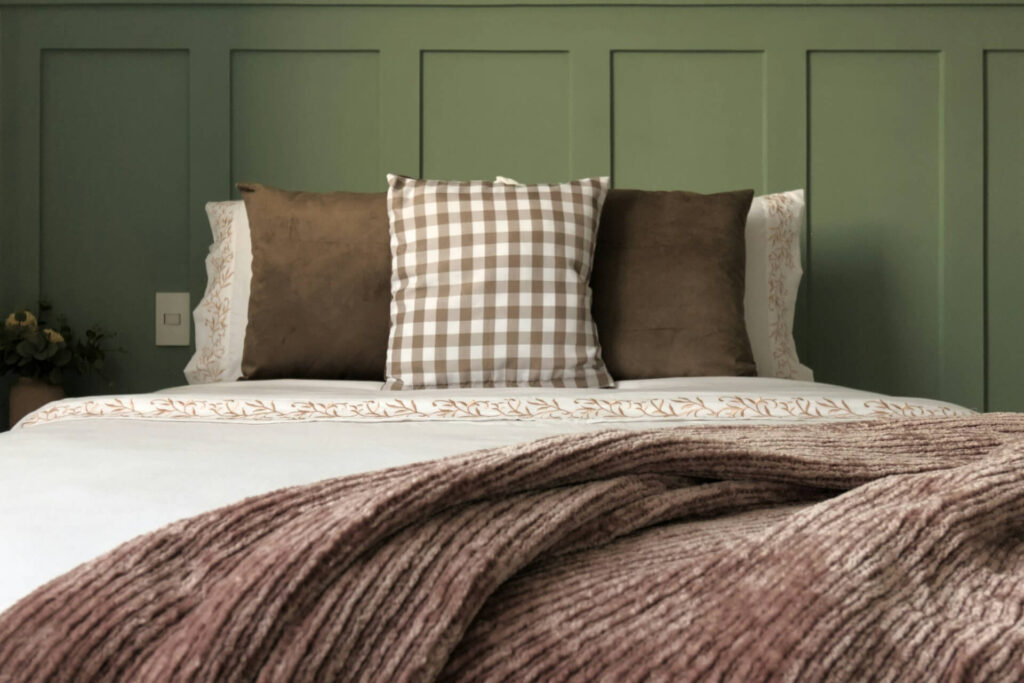
We are reader-supported. When you buy through links on our site, we may earn an affiliate commission.
Sometimes you just need a peaceful space. Suppose you work remotely. Your home office is one room you want to be able to focus in. Soundproofing can be simple to tune out distractions. Here are some tips for how to soundproof a room.
1. Add Some Curtains
This is an affordable way to reduce noise levels. Look for drapes with thicker fabric to absorb the sound better. Blackout curtains are an excellent option for blocking out noise and sunlight.
If you want to add a sense of sophistication to the space, velvet curtains are a good choice. Blinds also help reduce energy costs by keeping air from escaping the room. Plus, they add visual interest.
2. Consider Weatherstripping
Weatherstripping adds extra insulation and saves money on your energy bills. They can also keep your home warm in the center by preventing drafts. Along with these benefits, it can limit the number of outdoor noises you hear, like traffic.
This is especially critical when working by a window during the day. So, seal the windows and doors with an adhesive rubber or plastic weatherstripping.
3. Use Soundproof Materials
One easy way for how to soundproof a room is using materials. Acoustic foam is a good choice. Cut the strips to size and pack them around the window frame. You can adjust the fit to dampen the outside volume to your desired level.
Here are a few more material options for your room:
- Acoustic Panels: These come in various colors and patterns.
- Acoustic Fabrics: These include theater curtains and studio blankets.
- Acoustic Coatings: Mass Loaded Vinyl (MLV) is a typical example.
- Floor Underlayment: This requires decoupling the flooring surface and the subfloor and using materials like cork rolls, felt and polymers.
4. Install a Slab Door
Using solid hardwood allows for better soundproofing qualities. It is less hollow and traps noises better. The material is also stronger, protecting your home against storms or intruders.
Plus, hardwood is attractive and can increase your home’s value. Fiberglass doors are another solid choice. They have a foam core which allows for better insulation.
5. Add Door Stoppers
Door sweeps and stoppers cover up holes in the button of your doors to minimize outside noises. Install rubber or plastic ones at the bottom of the entryway.
Adding these also improves your home’s energy efficiency. It helps with insulation and prevents air from leaking to other rooms. The door stoppers even prevent long-term damage to your walls.
6. Rearrange Your Furniture
If you have large pieces, push these against the wall to reduce the echoes from your children. A large wardrobe or bookshelf are good options. This allows sound to be absorbed by the furniture. Consider using upholstered items as well. It is better for acoustic absorption because it doesn’t reflect the sound waves as much as wood or plastic.
In addition, add some wall art or wallpaper to block out noise and add personality. If you have the ability, avoid using shared walls. For example, find a secluded area like a gym or basement for a music room.
7. Soundproof Your Floors
When planning how to soundproof a home, consider your flooring. Creaky floors can be annoying, especially to those below. Add rubber floor mats or tiles to absorb the sound to reduce noise levels. Another option is rugs or carpeting, which add extra comfort under your feet. These work the best when paired with a liner. Suppose you want to keep the look of hardwood and choose an underlayment to match your flooring. Try to instill during a renovation when the floor is already open.
8. Install Window Inserts
Window inserts can be an excellent alternative to heavy curtains. They will block out noises while allowing you to enjoy the view. Casement inserts are clear panes of glass or acrylic you can add over existing windows.
They create an airtight seal. Some are designed to be taken out quickly for convenience and safety. They can also add an extra layer of protection during severe weather.
9. Use Sealants
These help to fix any minor issues, such as cracks in the walls. In addition, they can be a great way to soundproof your space. Fill gaps with water-based acoustical sealant. Try to match the color of your wall.
Suppose you plan to repaint, choose a sealant you can easily paint over. When selecting your sealants look for ones with low volatile organic compounds.
10. Add Insulation
Insulation is an effective way for how to soundproof a room. Insulation can help add depth to your walls and create a natural acoustic barrier. It also improves your energy efficiency and indoor air quality. The insulation prevents air leaks and pollutants from entering the home.
Here are the steps to get started:
- Remove drywall and expose the studs.
- Add a layer of insulation between the studs. There are affordable fiberglass boards that are made specifically to absorb sound.
- Replace the drywall.
How to Soundproof a Room Effectively
Suppose you’re trying to work from home or want to work out in peace. Soundproofing is an easy option to block out distractions. Follow these tips for how to soundproof a room quickly.







